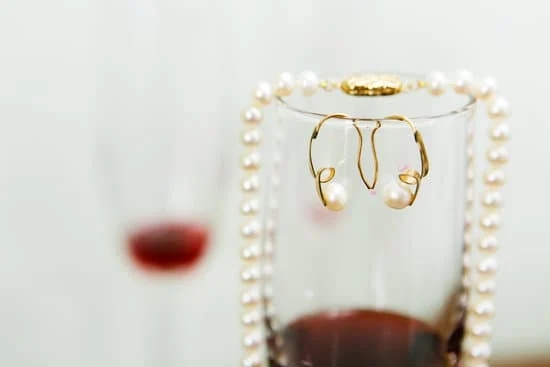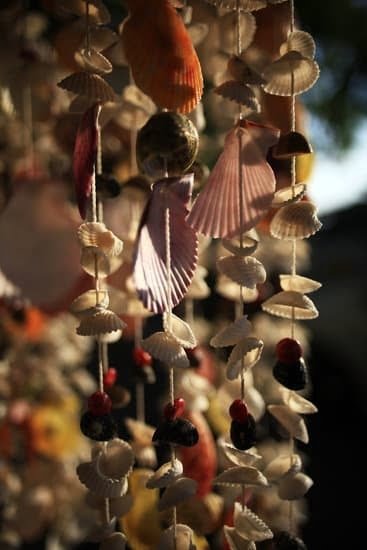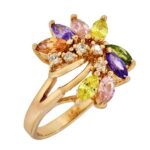When purchasing jewelry, especially pieces adorned with diamonds, it is important to ensure that you are investing in authentic stones. With the rise in popularity of synthetic or lab-grown diamonds, distinguishing between real and fake diamonds has become essential. This article aims to guide you through the process of identifying a real diamond in jewelry, equipping you with the knowledge necessary to make informed purchases.
Understanding the key characteristics of real diamonds is crucial when identifying their authenticity. The 4 C’s – Cut, Clarity, Carat, and Color – serve as valuable indicators of a diamond’s quality. By examining these factors closely, you can determine whether a diamond is genuine or not.
Visual inspection plays a vital role in determining whether a diamond is real or fake. A real diamond possesses unparalleled brilliance and sparkle due to its exceptional light-reflecting properties. Paying attention to these visual cues can help you differentiate between an authentic diamond and an imitation stone.
Stay tuned as we delve into the intricate world of diamonds, exploring various tests and techniques that can help you identify fake diamonds more effectively. From using magnifying glasses to detect flaws to conducting simple fog tests that separate the real from the synthetic, we will provide you with expert tips and tricks for spotting counterfeit gems.
By grasping these methods and understanding what distinguishes a real diamond from imitations or simulants, you’ll be well-equipped for your next jewelry purchase. Let us navigate this fascinating journey together as we become diamond experts, enabling us to make informed decisions when it comes to buying jewelry with authentic gemstones.
Understanding the 4 C’s of Diamonds
When it comes to identifying a real diamond in jewelry, it is crucial to understand the four main factors that determine a diamond’s quality and value. These factors are commonly referred to as the 4 C’s of diamonds: cut, clarity, carat, and color. Each of these factors plays a significant role in determining the overall beauty and worthiness of a diamond.
Cut
The cut of a diamond refers to its proportions and how well it has been shaped by a skilled cutter. A well-cut diamond will reflect light beautifully and emit maximum brilliance and sparkle. On the other hand, if a diamond is poorly cut, it will appear dull and lackluster. An excellent cut is essential because even if a diamond possesses exceptional clarity, color, and carat weight, without a proper cut, its beauty will be compromised.
Clarity
Clarity refers to the presence or absence of internal flaws (inclusions) and external blemishes on the surface (blemishes) of a diamond. These flaws can affect the overall brilliance and transparency of a diamond.
The Gemological Institute of America (GIA) grades diamonds based on their clarity scale ranging from Flawless (no inclusions or blemishes visible under 10x magnification) to Included (inclusions visible to the naked eye). When identifying real diamonds in jewelry, it is important to examine them for any visible flaws using appropriate tools.
Carat
Carat weight measures how much a diamond weighs. It is important to note that carat weight alone does not determine a diamond’s value or size; rather, it is one part of the equation used to evaluate its worth.
The price per carat increases significantly as diamonds become larger because larger diamonds are rarer than smaller ones. However, it is important to consider the other 3 C’s in combination with carat weight when assessing the quality and worthiness of a diamond.
Color
Diamonds come in a range of colors, from colorless (graded D) to light yellow or brown (graded Z). The most valuable diamonds are often colorless or near-colorless, as they allow for maximum brilliance and fire. While color is subjective and personal preference plays a role, it is still important to evaluate a diamond’s hue as part of the overall assessment.
Understanding the 4 C’s of diamonds provides a solid foundation for identifying real diamonds in jewelry. By considering these factors and learning more about what to look for, individuals can make more informed purchasing decisions when it comes to buying diamond jewelry.
Visual Inspection
When it comes to identifying a real diamond in jewelry, one crucial aspect to consider is its brilliance and sparkle. A genuine diamond possesses exceptional light performance, giving off a brilliant and dazzling sparkle that sets it apart from imitation stones. Visual inspection plays a significant role in examining these characteristics of a diamond.
Assessing Brilliance
One way to evaluate the brilliance of a diamond is to observe how the stone reflects and refracts light. Hold the diamond under different lighting conditions and angles to see how it interacts with light. A real diamond will display an extraordinary play of light, with bright flashes and intense sparkle. Look for lively reflections, gleaming white light, and colorful flashes known as fire.
Evaluating Sparkle
In addition to brilliance, the sparkle of a diamond also indicates its authenticity. Genuine diamonds exhibit a stunning scintillation effect, where they appear to twinkle or shimmer as they move. This scintillation occurs due to the way light bounces off the facets within the stone. As you examine a diamond’s sparkle, watch for consistent patterns of shimmering and flashing as you rotate the jewelry piece.
It is important to note that fake diamonds may attempt to mimic brilliance and sparkle through various means such as glass coatings or cubic zirconia stones. While these imitations can often possess some level of shine, they usually lack the unique and mesmerizing qualities present in genuine diamonds. By carefully evaluating the brilliance and sparkle during visual inspection, you can gain valuable insights into whether or not the diamond in question is real.
Overall, visual inspection allows you to directly assess key characteristics like brilliance and sparkle – traits that are indicative of an authentic diamond. Remember that while this method provides important insights into a diamond’s authenticity, it should be supplemented by other tests and evaluations outlined in this article for a comprehensive assessment before making any purchasing decisions.
Using a Magnifying Glass
When looking to identify a real diamond in jewelry, using a magnifying glass is an essential step. A magnifying glass allows you to closely examine the stone and look for any inclusions or flaws that are often present in natural diamonds. Here are some steps to follow when using a magnifying glass:
- Choose the Right Magnification: It is recommended to use a 10x jeweler’s loupe or a microscope with 10x-30x magnification for detailed inspection. This level of magnification will allow you to see even the smallest imperfections in the diamond.
- Inspect the Diamond Under Good Lighting: Place the diamond on a clean, well-lit surface and hold the magnifying glass close to your eye. Make sure there is enough light so that you can clearly see any inclusions or flaws.
- Look for Inclusions: Inclusions are internal characteristics or tiny imperfections within the diamond. They can appear as small crystals, feathers, clouds, or other irregularities. With the help of your magnifying glass, carefully scan the stone for any such features.
- Check for Flaws: Flaws, also known as blemishes, refer to external marks on the diamond’s surface. These can include scratches, pits, chips, or nicks. Examine all sides of the diamond thoroughly under magnification to detect any flaws.
- Avoid Confusing Inclusions with Light Reflections: Sometimes, certain reflections may appear similar to inclusions under magnification. Remember that true inclusions do not move or change position when you rotate the diamond. If what you see seems to shift with movement, it is likely a reflection.
By conducting a detailed inspection with a magnifying glass, you can gain a better understanding of the diamond’s clarity and quality. Keep in mind that the presence of inclusions or flaws does not necessarily mean a diamond is fake. In fact, natural diamonds often have some form of imperfections, which are an integral part of their formation process. However, the position and visibility of these characteristics can affect the value and desirability of the diamond.
The Fog Test
One popular method for distinguishing between real diamonds and fake diamonds is the fog test. This simple test involves breathing on the diamond and observing how quickly the fog clears.
To perform the fog test, simply hold the diamond in front of your mouth and breathe on it as if you were trying to fog up a window. Pay close attention to how long it takes for the fog to dissipate. A real diamond will clear up almost instantly because it has high thermal conductivity, which means it can absorb heat quickly and disperse it equally across its surface.
On the other hand, fake diamonds or cubic zirconia will retain the fog for longer periods of time since they have lower thermal conductivity. This difference in thermal conductivity causes the fog to linger on fake diamonds while evaporating much more quickly on real ones.
It’s important to note that this test is not foolproof, as some synthetic diamonds can pass it due to their higher thermal conductivity. However, for most cases, the fog test serves as a useful tool in distinguishing between real diamonds and fakes.
If you’re still uncertain about whether your jewelry contains a real diamond after performing various tests, it may be best to seek professional help from certified gemologists. These experts are knowledgeable about different types of stones and can provide accurate assessments of their authenticity. They have access to specialized equipment such as refractometers and microscopes that can more accurately determine whether a diamond is genuine or not.
- Introduction: What to Look for in a Real Diamond
- Understanding the 4 C’s of Diamonds: Cut, Clarity, Carat, and Color
- Visual Inspection: Examining the Brilliance and Sparkle of a Diamond
- Using a Magnifying Glass: Checking for Inclusions and Flaws in a Diamond
- The Fog Test: Distinguishing between Real Diamonds and Fake Diamonds
- The Transparency Test: Determining the Authenticity of a Diamond through Transparency
- The Scratch Test: Assessing the Hardness of a Diamond
- Seeking Professional Help: Consulting with Certified Gemologists for Authenticity Confirmation
- Common Diamond Simulants: Identifying Fake Diamonds in Jewelry
- Where to Buy Authentic Diamond Jewelry: Tips for Finding Reputable Jewelers and Retailers
The Transparency Test
Transparency is an important characteristic to consider when determining the authenticity of a diamond. A real diamond has high transparency, meaning that it allows light to pass through it easily and without obstruction. This is one of the key features that gives diamonds their brilliance and sparkle. In contrast, fake diamonds or diamond simulants may have a lower level of transparency, which can be used as a clue to identify them.
To perform the transparency test, you will need access to a well-lit area. Place the diamond on a plain white surface and examine it closely. Look for any signs of cloudiness, haziness, or milky appearance. A real diamond should appear clear and transparent, allowing you to see through it with minimal distortion. If you notice any lack of transparency or if the stone appears foggy or dull, it may not be a real diamond.
In addition to visual inspection, there are other methods you can use to verify the transparency of a diamond. One technique involves placing the stone upside down on a page with small text printed on it.
If you are able to read the text through the stone clearly and without much difficulty, it is likely that you have a genuine diamond in front of you. On the other hand, if the text appears blurry or distorted when viewed through the stone, it could indicate that it is not a real diamond.
Using fluorescence testing can also help determine the authenticity of a diamond based on its transparency. When exposed to ultraviolet (UV) light, many diamonds emit varying degrees of fluorescence. While some diamonds may exhibit blue fluorescence under UV light (which does not affect their clarity), others may display yellow fluorescence (which can adversely impact their overall appearance). This method should be used in conjunction with other tests for more accurate results.
It’s important to note that while transparency is an essential aspect in identifying real diamonds, this test alone cannot definitively confirm its authenticity since some fake diamonds mimic this characteristic. Therefore, it is important to consider other factors such as the 4 C’s and professional expertise before making a final determination. Seeking the advice of a certified gemologist or experienced jeweler is highly recommended for an accurate assessment.
| Transparency Test | Result |
|---|---|
| Diamond appears clear and transparent | Real diamond |
| Diamond appears cloudy, hazy, or milky | Potential fake diamond |
| Text appears clear and readable through the stone | Real diamond |
The Scratch Test
What is the Scratch Test?
One of the most reliable methods to identify a real diamond is by conducting the scratch test. This test assesses the hardness of a diamond and helps determine if it is authentic or not. The scratch test involves using another diamond or a substance with a known hardness, such as corundum, to scratch the surface of the stone in question. If the suspected diamond leaves a visible scratch on the other material, it is likely to be genuine.
How to Perform the Scratch Test
To perform the scratch test, you will need a diamond testing pen or a small piece of corundum. Start by holding the stone firmly in one hand and gently pressing the tip of the pen against its surface. Apply moderate pressure while moving the pen in a straight line across the stone. Alternatively, if you are using corundum, rub it against the surface of the stone with some force.
It’s important to note that you should only perform this test if you are certain about your own safety and have experience working with diamonds. If you’re unsure or uncomfortable doing it yourself, it’s recommended to seek professional help from certified gemologists who can accurately assess your diamond’s authenticity.
Interpreting Results
When conducting the scratch test, there are two possible outcomes to consider:
- Scratch: If your suspected diamond leaves a visible scratch on another substance, such as another diamond or corundum, it is highly likely to be genuine. Diamonds are one of nature’s hardest substances and can only be scratched by other diamonds or materials with similar hardness.
- No Scratch: If your suspected diamond does not leave any visible scratches on another material, it may not be genuine. Keep in mind that while this may indicate that your stone is not a real diamond, further testing and consultation with professionals are necessary for confirmation.
Remember, every diamond is unique, and there can be exceptions to the scratch test. Thus, it’s always wise to seek expert opinions for a conclusive assessment of your diamond’s authenticity.
Seeking Professional Help
Professional gemologists play a crucial role in confirming the authenticity of a diamond. While visual inspections and home tests can give you a good indication, consulting with an expert can provide you with professional and unbiased opinions. Here are some reasons why seeking professional help from certified gemologists is important when it comes to authenticity confirmation:
- Knowledge and Expertise: Certified gemologists undergo extensive training and education in the field of diamonds. They possess in-depth knowledge about various aspects of diamonds, including their grading, identification, and value. With their expertise, they can accurately assess the quality of a diamond and confirm its authenticity.
- Specialized Equipment: Gemologists use specialized tools and equipment that are specifically designed for diamond testing. These tools include microscopes, spectrometers, refractometers, and diamond testers. These instruments can provide precise measurements and detailed analysis of a diamond’s properties, such as its clarity, color, cut, and carat weight.
- Third-Party Verification: One advantage of consulting with certified gemologists is that they are independent professionals who do not have any vested interest in selling or promoting particular diamonds or jewelry. This ensures that their assessment is impartial and unbiased. Their verification adds an extra layer of credibility to your diamond’s authenticity claim.
When seeking professional help for authenticity confirmation, here are a few tips to consider:
- Look for renowned gemological institutions or laboratories that offer certification services.
- Choose certified gemologists who have reputable credentials from recognized organizations.
- Consider hiring gemologists who have vast experience in the field.
- Be sure to ask about the specific tests they will conduct to determine the diamond’s authenticity.
By consulting with certified gemologists for authenticity confirmation of your diamond jewelry, you can gain peace of mind knowing that your purchase is genuine and reliable. Their expertise combined with specialized tools will help ensure that you are making an informed purchasing decision based on accurate information.
Common Diamond Simulants
In the world of jewelry, it’s not uncommon to come across fake diamonds that are designed to imitate the beauty and sparkle of a real diamond. These simulants can be made from various materials and can fool even the most discerning eyes. However, there are ways to identify these fake diamonds and ensure you’re buying the real thing.
One common diamond simulant is cubic zirconia (CZ), which is a synthetic material that closely resembles a diamond. CZ is optically flawless, so it has no inclusions or imperfections like natural diamonds do. It also exhibits exceptional brilliance and fire, making it difficult to distinguish from a real diamond through visual inspection alone.
Another popular diamond simulant is moissanite, which is actually a gemstone in its own right but often used as a diamond alternative. Moissanite has similar properties to diamonds, including its brilliance and hardness. It can even outperform diamonds in terms of sparkle due to its high refractive index.
Lab-grown diamonds are another type of simulants that have gained popularity in recent years. These diamonds are produced in controlled laboratory environments using advanced technology that replicates the conditions under which natural diamonds form underground. They have the same chemical composition and physical properties as natural diamonds but are more affordable.
Knowing how to identify these simulants can help you make an informed decision when purchasing diamond jewelry. There are several key differences between these simulants and real diamonds that you can look for:
- Refractivity: Real diamonds exhibit strong white light dispersion (‘fire’) while simulants such as CZs tend to display rainbow-colored fire or flashes of color.
- Hardness: Diamonds are the hardest known substance on earth, rating 10 on the Mohs scale of hardness. Most simulants have lower hardness ratings and may show signs of wear or scratches over time.
- Heat Conductivity: Diamonds conduct heat exceptionally well, which means they disperse heat quickly when touched to the surface of the lips. Fake diamonds may not have the same level of thermal conductivity.
Understanding these differences will enable you to identify fake diamonds and ensure that you are investing in genuine and valuable jewelry.
| Feature | Real Diamonds | Simulants (e.g., Cubic Zirconia, Moissanite, Lab-grown Diamonds) |
|---|---|---|
| Refractivity/fire | Strong white light dispersion | Rainbow-colored fire/flashes of color |
| Hardness (Mohs scale) | 10 (hardest substance on earth) | Varies (usually lower than diamonds) |
| Heat Conductivity | Much higher thermal conductivity | Moderate thermal conductivity or lower |
By being aware of these distinctions and using various identification techniques outlined in previous sections, you can confidently distinguish between real diamonds and their simulants when making your next jewelry purchase. Remember, if you’re ever unsure about the authenticity of a diamond, it’s always best to consult with a certified gemologist for professional confirmation.
Where to Buy Authentic Diamond Jewelry
When it comes to purchasing diamond jewelry, it is crucial to find reputable jewelers and retailers to ensure the authenticity and quality of your purchase. Here are some tips to help you find trustworthy sources for buying authentic diamond jewelry:
- Research and Read Reviews: Before making any purchase, take the time to research different jewelers and read reviews from previous customers. Look for feedback regarding the store’s reputation, customer service, and the authenticity of their diamonds. This will give you a good idea of the jeweler’s credibility.
- Seek Recommendations: Ask friends, family members, or colleagues who have recently bought diamond jewelry about their experiences with specific jewelers or retailers. Personal recommendations can be valuable in finding trustworthy sources.
- Check Certifications: Reputable jewelers often provide certification for their diamonds. Be sure to check if the jeweler is certified by reputable organizations such as the Gemological Institute of America (GIA) or the American Gem Society (AGS). These certifications ensure that the diamonds have been thoroughly examined by experts and meet certain standards.
- Visit Established Stores: Established jewelry stores with a long-standing reputation in the industry are generally more trustworthy than newer or lesser-known ones. Look for stores that have been operating for several years and have a good track record.
- Compare Prices: While price should not be the sole determining factor, comparing prices among different jewelers can give you an idea of what is reasonable for the quality of diamond you are interested in purchasing.
Remember, buying diamond jewelry is an investment, so it’s essential to do thorough research before making a purchase. Following these tips will help you find reputable jewellers and retailers who offer authentic diamonds of high quality.
| Tips: |
|---|
| Research and Read Reviews |
| Seek Recommendations |
| Check Certifications |
| Visit Established Stores |
| Compare Prices |
Conclusion
In conclusion, understanding how to identify a real diamond in jewelry is crucial for making informed purchasing decisions. By familiarizing yourself with the 4 C’s of diamonds – cut, clarity, carat, and color – you can have a better understanding of the quality and value of a diamond. Visual inspection and using tools like magnifying glasses can help you examine the brilliance, sparkle, and any inclusions or flaws in a diamond.
Additionally, tests like the fog test and transparency test can assist in distinguishing between real diamonds and fake ones. Remember to also conduct the scratch test to assess the hardness of a diamond, as this characteristic is unique to genuine diamonds.
When in doubt, seeking professional help from certified gemologists is highly recommended. They have the expertise to confirm the authenticity of a diamond and provide valuable insights about its quality. Furthermore, they can guide you towards reputable jewellers and retailers who sell authentic diamond jewelry.
Becoming a diamond expert takes time and practice, but it will greatly benefit you when making purchases. Armed with knowledge about identifying real diamonds, you can confidently make informed decisions while shopping for jewelry. Whether it’s buying an engagement ring or adding to your collection, being able to distinguish between real diamonds and fake ones will ensure that you invest in high-quality pieces that retain their value over time.
Frequently Asked Questions
How can you tell if jewelry is real diamond?
One way to determine if jewelry contains real diamonds is by examining the diamond itself. Real diamonds are known for their unique brilliance and sparkle, often referred to as a “fire” within the gemstone. They reflect light in a distinct and captivating manner due to their exceptional refractive properties.
Another method is by checking for any flaws or imperfections within the diamond. Natural diamonds usually possess minute inclusions or blemishes that can be observed under magnification, such as with a jeweler’s loupe.
What is the easiest way to tell if a diamond is real?
The easiest way to determine if a diamond is real is by conducting a fog test. Simply breathe onto the diamond as if you were trying to fog up a mirror or glass surface.
If the diamond remains clear and does not become foggy or misty, then it is likely a real diamond. This test works because diamonds are excellent heat conductors, meaning they disperse heat quickly and do not retain it long enough to create condensation from one’s breath.
Do real diamonds have markings?
Often, real diamonds do not have visible markings on them like other gemstones may have, such as hallmarks or engravings indicating purity or origin of the stone. Some luxury jewelers might inscribe their logo or mark onto the metal band that holds the diamond, but this does not necessarily guarantee authenticity of the stone itself.
However, some specific types of diamonds may have markings for identification purposes by gemological laboratories or certification entities that grade and document various characteristics of diamonds. These markings are generally microscopic and require magnification equipment to observe accurately, ensuring legitimate authentication and certification of a particular diamond’s quality and attributes.

Welcome to my jewelry blog! My name is Sarah and I am the owner of this blog.
I love making jewelry and sharing my creations with others.
So whether you’re someone who loves wearing jewelry yourself or simply enjoys learning about it, be sure to check out my blog for insightful posts on everything related to this exciting topic!





